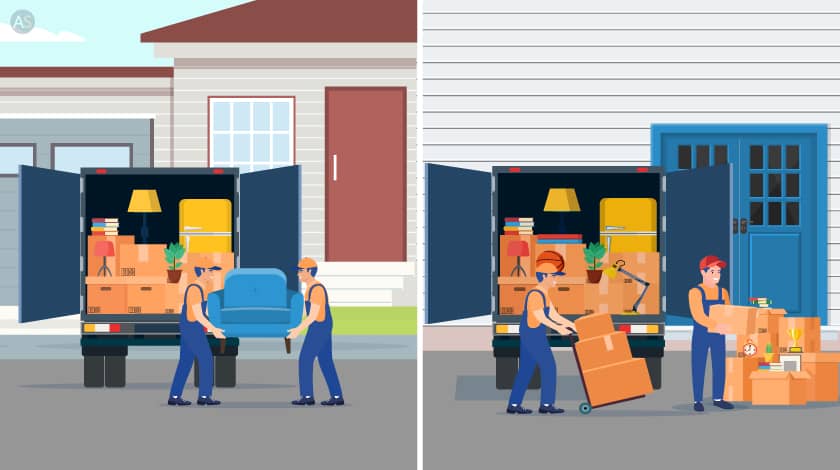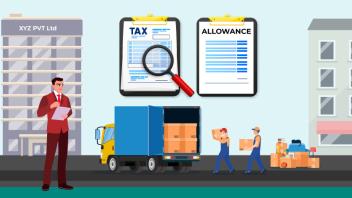7 Effective Strategies for Loading & Unloading: Simplify Your Move

Moving on your own is a tough task. Relocation is cumbersome and requires a lot of effort and legwork. You need to prepare for the move, pack all of your belongings and have them transported to the new location in either rented trucks or your personal vehicles. One thing that is often overlooked in the moving process is the loading and unloading.
Loading and unloading is a critical aspect of logistics and involves the movement of goods from one place to another. From proper planning of inventory to utilizing the right equipment for loading your belongings onto the right size truck, we cover several strategies to streamline your loading and unloading operations when moving on your own.
#1 Make a Proper Moving Plan
Before a move, it's important to prepare a proper moving plan which involves a list of inventory, the equipment needed for loading and unloading, packing supplies required, the route to be taken, moving carrier type, and so on. Making a note of your inventory will help to keep a track of your belongings in your new location and making a decision on packing supplies, equipment and carrier type will help save time and money.
#2 Pick the Right Truck
The next thing to consider after making a list of your inventory is to pick a truck of the right size. Picking a small truck can mess up the loading process and may require you to take multiple trips to the new location and picking an oversized truck can result in extra spending. Therefore it's important to pick a moving truck of the right size.
#3 Ask for Help
Loading and unloading is no easy task to be performed alone, therefore ask help from your friends or family members to speed up the moving process. This will also lessen the burden on you to a certain extent.
Another important aspect is to clearly communicate with them and have the understanding to ensure that everyone is aware of the task at hand and the progress you are making. You can assign two helpers to arrange the boxes in the truck while the others carry them along. This way the loading and unloading process will be completed efficiently.
#4 Labeling & Documentation
Labelling boxes and documenting all belongings is an important aspect of moving. After packing your belongings securely, document all items inside the boxes and clearly label each box. Mention breakable, heavy items and lightweight items outside the moving box. This will easily help to identify the boxes during the loading and unloading process.
#5 Use the Right Equipment
Unloading and loading by hand is a slow and tedious process and can cause injury if not executed properly. Investing in moving equipment can speed up the process considerably while making it less tiring and burdensome. So either buy or rent some basic loading and unloading equipment you need. Some of the commonly used tools for this job are listed below.
- Hand trucks: L-shaped metallic frame with two wheels which helps to ease 8transportation.
- Panel movers: Skid-resistant vehicles used to transport partition panels, bed frames, etc.
- Furniture sliders: Used to transfer heavy-weight furniture without causing harm.
- Ramp: Serves as a bridge from the ground to the truck, allowing you to load items onto trucks using forklifts or dollies.
- Forklift: Also called a lift truck, they are used to load and unload heavy goods into a truck for transportation.
- Side loaders: Similar to forklifts and are used to lift heavy items.
#6 Load the Heavy Items First
When loading your belongings into the truck, load the heavy items first such as kitchen appliances like stove, refrigerator, washing machine, dishwasher, etc., first and place them at the bottom.
Next, Place all the nightstands, cupboards, and all other furniture that has drawers against the walls of the truck. This will protect the furniture from violent movement or damage during transit.
Finally, load all of the lightweight stuff like clothing, bedding, footwear, and so on. You can also use these to fill up the gaps between the boxes, which will give a cushioning effect.
#7 Secure the Goods
Securing the cargo in a truck is an essential step while loading. This ensures the safety of the goods during transit. There are several methods that can be used to secure your goods in a truck, such as:
- Straps & ropes: Using straps and ropes to secure items to the truck bed can help prevent movement during transit.
- Tarps: Covering the cargo with a tarp can protect it from weather and road debris.
- Dunnage: Using materials such as wood blocks or airbags to separate and cushion items can prevent damage during transit.
- Load bars: Installing load bars across the width of the truck bed can help distribute weight and prevent items from shifting.
- Load locks: Using load locks or other mechanical locking systems can provide an extra level of security for your cargo.
Conclusion
Loading and unloading while transporting goods is a challenging and time-consuming process, so you need to have a proper plan to carry out these operations efficiently and safely.
From selecting the right size truck and equipment to properly loading them onto the carrier truck to packing your belongings right, this blog will guide you through all the strategies to employ for a secure and smooth moving experience. The best option, however, would be to hire a professional mover for the job as they are experienced and come with all the equipment and supplies to handle every aspect of your move. So, stop thinking and start planning!











